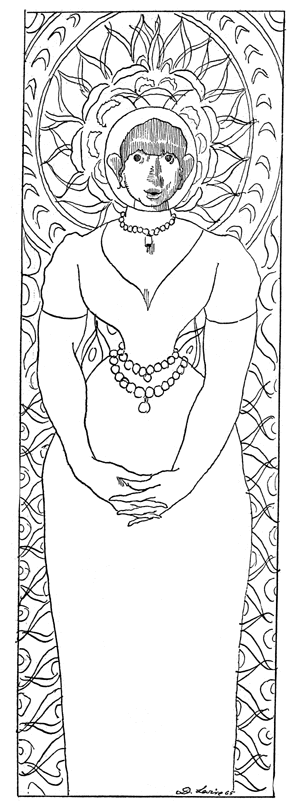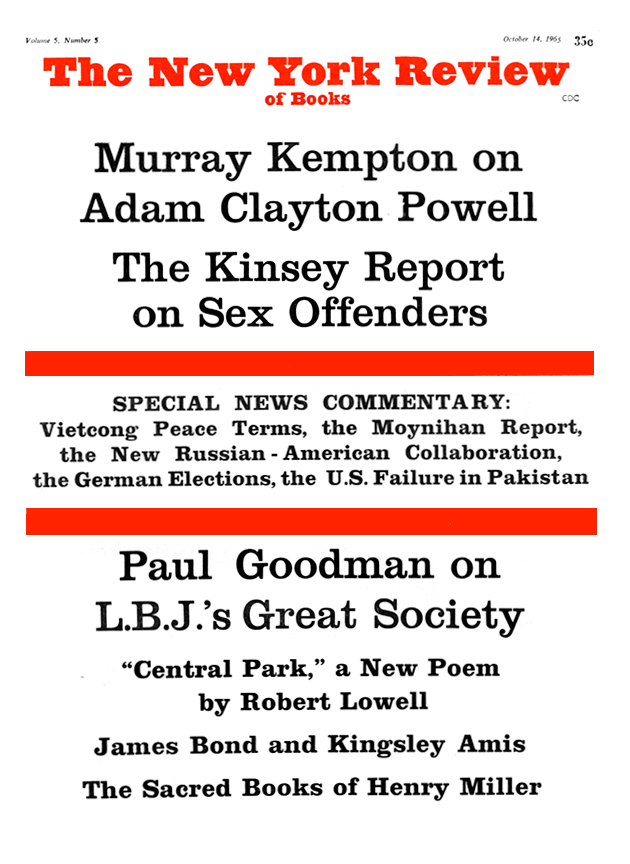When Miss Isabella Stewart of New York went to Boston for the first time in 1858 to visit Miss Julia Gardner, a friend acquired at finishing school in Paris, she was taken driving in a furlined sleigh known as “Cleopatra’s Barge.” This hedonistic side of Boston, not its most conspicuous, was one she would luxuriate in after her marriage to her hostess’s brother, rich jack Gardner, and until she died at eighty-four in the Venetian palace she had had built in the Fenway where, in her last years, enfeebled (she did not admit to her enfeeblement and contrived a multitude of reasons why she could not go abroad) but nimble-witted, swaddled in white scarves to veil the signs of her decay, she was carried from room to room in a gondola chair, balancing thus the vehicular fillip of her entrance into the Hub with another at her exit. She built her palace, now a museum partly to house her imposing collection of virtu as a treat to the public, but mainly, for the last twenty-odd years of her life, to house herself, an eccentric, who combined in her person the same variety of worth and caprice, grandeur and sentimentality, sure-footed authority and luck, that mark the pictures and tapestries hanging on her walls and the statuary crowding her hallways, the rare books behind glass and the bibelots on tabletops. Fenway Court is kept, down to the least detail, as it was in her quirky, imperious lifetime: her will sternly stipulated that if so much as a chair were moved or if a new picture or an alien oddment were insinuated into the premises, if there were the slightest infraction of any of the rules she had laid down, the Museum and the land it stands upon, the whole kit and caboodle, would pass into the hands of Harvard College to be sold, and the income from the trust fund she had left for its maintenance would be diverted to the increase of salaries for professors of “said college, or in sustaining scholarships.”
Louise Hall Tharp, who specializes in the lives of accomplished Americans of the nineteenth and early twentieth centuries (she has written about the Peabody sisters, Julia Ward Howe, Horace Mann, the Agassiz family), has now come out with a biography of Isabella Stewart Gardner. Considering the abundance of engaging fact and legend at her disposal, she could have made this book ten times as attractive as it is; she tends to pussy-foot around her anecdotes, archly pulling her punches, or to gush them out, putting her exclamation marks in the wrong places. There is almost nothing so limp and sorry as a badly punctuated Boston joke. And this is a pity because many of Mrs. Tharp’s involve such performing lions as Henry James, Bernard Berenson, Edith Wharton, John Singer Sargent, Henry Adams. The musty, girlish jocularity of manner suggests a series with titles like “Isabella Goes to Boarding School,” “Isabella Abroad,” “Isabella sur la Plage”: “…Belle, having mastered the fairly simple lessons, turned her attention to flirting with the Italian teacher. Nothing loath, he joined in the game, although with discretion, lest he lose his job.” Nevertheless, Mrs. Tharp is a scrupulous and scholarly chronicler and she sets the record straight; Mrs. Jack, semi-mythical until now, fights clear of the obfuscations of style to emerge a very remarkable woman, a grandstander who dismayed Boston and supplied the gossip columnists with unlimited copy, a weatherproof traveler who shopped for brocade in heat in Japan and rode buffalo carts in Cambodia and tented outside Jericho and drank (with emotion, one must imagine) of the River Jordan and ate fearlessly and sickened but continued her journeys; a fishwife with servants, a patsy for young men but a wily match for wily Berenson: a great patroness of music, especially of the Boston Symphony, a student of Dante and of jujitsu, an admirer of John L. Sullivan and the Boston Red Sox. Briefly she owned a racing stable. But above all, she was an accumulator of treasures, and Fenway Court, for all its queer arrangements and unorthodox (indeed, at times, umbrageous) lighting, is an achievement at once splendid and amiable. It is the house of a rich, intelligent woman who had a grand time spending her money.
At a time when rich Americans were shopping frenetically for art in Europe and in their greed and gullibility were swindled as often as not so that they came home with trash, a lot of it fake and a lot of it merely atrocious, Mrs. Gardner and her husband found and bought the real thing. They were guided by an inherent taste that became sophisticated through their frequent and studious trips abroad, and guided as well by Berenson who acted as their scout and buyer of pictures by Titian, Velasquez, Botticelli, Giotto, Fra Angelico, Vermeer. Mrs. Gardner collected painters as well as paintings, notably John Singer Sargent, whose most famous portrait of her, in which she wears priceless pearls around her waist, hangs in no particular prominence in the Gothic room of the museum; in front of it are vases of lilies, always fresh from the extraordinary greenhouses she provided for in her will which supply also the wonderful flowers in the humid inner court of the palace. Later on, when she was old and had taken up her white veils, Sargent painted her again in water-color, and this masterpiece stands atop a bookcase where she could look at it from a couch; if not forewarned, the sightseer misses it.
Advertisement
She was plain of face but exquisite of figure, tiny and perfect, the delight of the most talented couturiers of Paris; dressed daringly by them and shimmering with diamonds in her hair and rubies on her shoes (her collection of jewelry was nearly as astonishing as her pictures), she challenged the women of Boston and for the most part they did not like her; by the same token, their husbands did. But while she beguiled she also annoyed, and Henry James, who was deeply fond of her but as deeply envious of her money and her demands on him—she had a habit of summoning people who were in London when she was in Venice and being put out of sorts when they begged off—once wrote with asperity that she was like “a locomotive with a pullman car attached.” He got her number and wrote to a friend, “…I think she is too amiable to become really fashionable. I see her succeeding better at Grand Hotels than at grand manners. She tries too hard and listens too sympathetically—bless her innocent (after all) heart.” He was right: she did try too hard, and it is embarrassing to know that one time during Lent she did her penance publicly and out of doors by scrubbing down the steps before the Church of the Advent; that she drove a train from Boston to Pride’s Crossing; that she showed up at Symphony Hall, during a momentary flirtation with baseball, wearing a fillet around her head imprinted with the words “Oh You Red Sox.” These inanities are so extreme that they make her sound like the most desperate attention-getter, hopelessly unsure or hopelessly vulgar, and essentially she was neither; was, on the contrary, kind, charming, witty, elegant, gracefully bookish. Amazingly odd as the opening of her Palazzo was, it somehow does not seem silly as do the ads for the ball team and the pious charwoman hokum: she served the haut monde champagne and doughnuts. Edith Wharton, who had come on from New York, in all likelihood to sneer since Mrs. Jack had transgressed every law she had laid down in The Decoration of Houses, observed, speaking in French, that the refreshments were “about what you would get in a railroad restaurant in provincial France.” Her food despised and her French (which was good) impugned, Mrs. Gardner told Mrs. Wharton as she left that she had been nice to come, “but she needn’t expect another invitation to eat in this railroad restaurant.”
Mrs. Jack made an ass of herself with asses like F. Marion Crawford; much her junior, a mediocre-to-inferior writer, he enjoyed her company, possibly intimately, in her upstairs sitting room until the friendship assumed the proportions of a scandal and he decamped, perhaps at the suggestion of Mr. Jack. She went into a decline, was said to have “a nervous breakdown,” but presently perked up and went off to the Orient where, although the King of Cambodia tacitly invited her to give him her magnificent yellow diamond, she did not—eventually, decades later, in a rather casual gesture, she gave it to Nellie Melba. She kept up her coquetry throughout her life and surrounded herself with young men who appealed to her (she liked them good-looking and she liked them lean; she hectored Sargent for getting plump) and whose gifts as writers, painters, musicians she did not always overestimate; but after the French boudoir escapade with Crawford, she entertained her attendants in the drawing room.
She was a show-off but she was a contemplative, madly spendthrift and uncommonly mean (at the end of her life she quibbled over the gas bill and sent her dinner guests hungry from her table), royal and ridiculous. And so, exasperating as this book is, it is good entertainment: one likes to read about paradoxes and one likes to read about the very rich at play, buying whatever takes their fancy—the silks and precious gem stones of Cathay, the specialty of the moment in Samarkand, the pretty old pictures in funny old palaces in Italy—particularly when what takes their fancy is the genuine article.
Advertisement
This Issue
October 14, 1965



